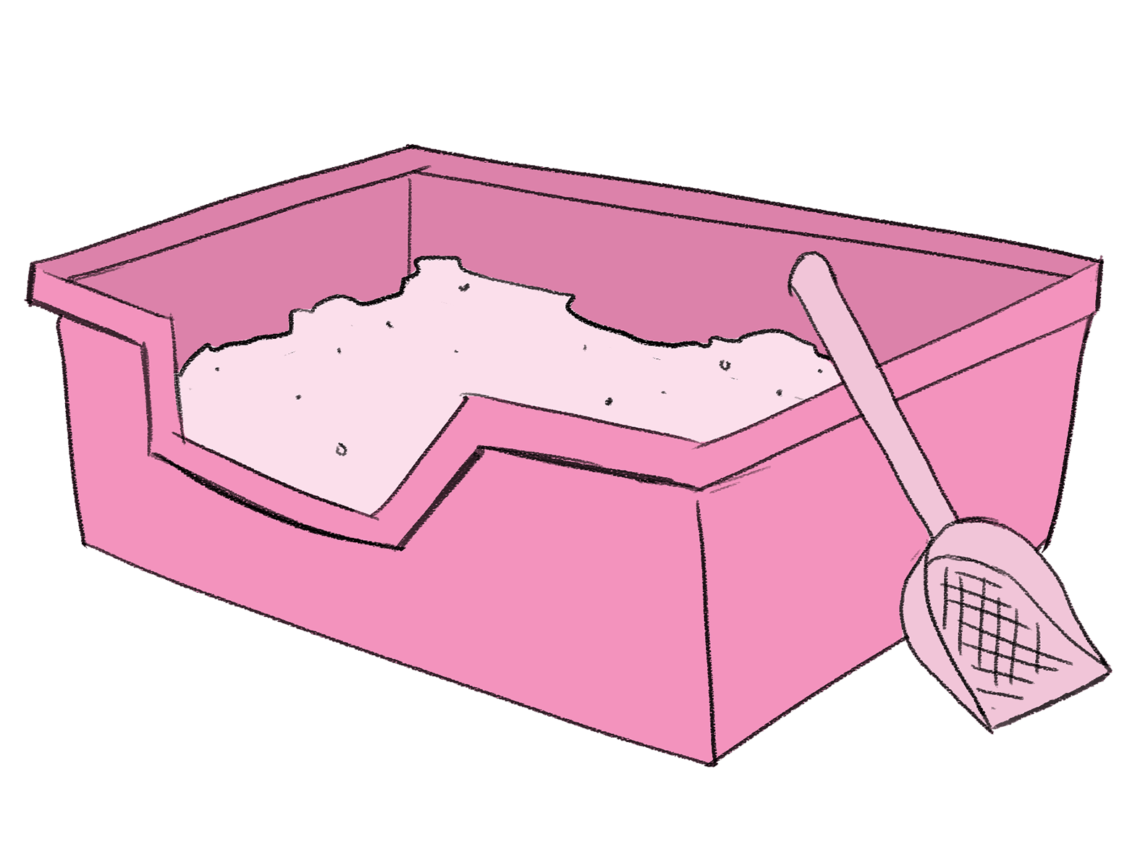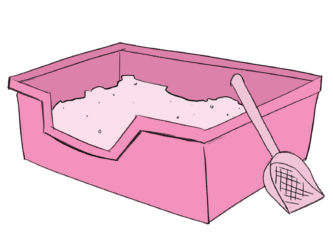
Litter Box 101!

Litter Box 101!
By Nathalie Mireles
July 25, 2019
Unraveling the mysteries of … the litter box.
Whether the litter box seems like an afterthought or a mysterious relic, we can put a spotlight on this most essential of all cat accessories! We have sifted through the clay expanses to bring you the facts that you need to know!
General Tips
One litter box per cat plus one additional box is recommended
Clean the litter box daily. You wouldn’t want to use a dirty toilet!
Kittens should not use clay clumping litter as it can cause blockages in their digestive system. Either use the old fashioned Johnny Cat type litter, or if you really prefer clumping litters, use a product such as ökocat Super Soft Natural Wood Clumping Litter. That way if the kitten accidentally ingests some, it is less likely to cause any blockage. Okocat may seem expensive, but it lasts a long time and is much cheaper than veterinary bills!
Different cats like different types of litter. If your cat doesn’t like your first choice, try something else.
Watch your cat to ensure they are using the litter only for bathroom purposes. Some cats will try to eat litter (especially the pelleted pine types) which can be extremely dangerous for the cat.
Some types of wood can be toxic to cats. If you use a pine or other type of wood based clumping or pelleted litter, make sure it is labeled “kiln dried” as this process heats the wood to a point where the toxic oils are removed and the wood odor becomes safe for cats to inhale.
Wash the litter box every few weeks with soap and warm water. Be sure to rinse it thoroughly and dry it. Lingering strong odors from cleaners may deter your cat from returning to the litter box.
If you choose to switch litter brands, you might need to do it gradually. Switching too suddenly may lead to your cat having accidents elsewhere.
Keep two inches (depth) of litter in the box at all times. Too little litter prevents your cat from covering his/her waste and may lead to an aversion to litter boxes.
Some cats will accept covered litter boxes while others don’t like the feeling of being trapped/confined. If you find your new feline friend is not using the covered litter box, try taking the lid off.
Litter box liners are strictly for convenience. They are not necessary, and your cat may shred them as he/she is scratching to cover waste.
Looking for an easy to clean litter box? You might like Pet Mate 42036 Arm & Hammer Large Sifting Litter Pan. It includes a litter box sized sifter. Just lift the sifter and all the clean litter pours back into the litter box. All the dirty litter stays in the sifter and is ready to be dumped out.
Placement and Location
Keep your cat’s litter box away from his/her food and water. You wouldn’t want to eat in your bathroom!
If you have a large home, consider placing a litter box on each floor (at least at the beginning) so your cat will find it convenient and accessible.
If you have a nervous or shy cat, having the litter box in the same room as the cat bed can make it less stressful than having to wander to other rooms to use the box.
If your cat is tracking lots of cat sand out of a covered litter box, consider putting a mat under the box and turning the opening towards a corner or wall. That way your cat will have to walk on the mat as he/she is exiting. More of the litter will stay on the mat instead of on your floor.
If you also have a dog, keep the litter box in a place where your dog can’t access the litter but the cat can, as many dogs like to eat cat feces which is very bad for them (especially if it’s covered in litter) as that can block their digestive tracts and become fatal.
Litter Box Lapses
Dirty litter boxes are one of the main reasons why your scrupulously clean cats may stop using the litter box.
Fluffy bedding such as duvets and throws may be an attractive alternative to litter box for newly settling felines. If you cat is having accidents, put those away for now.
Soil at the base of potted plants can be more attractive than the litter box. If this happens, either put the plant in an inaccessible area, or put foil over the soil to deter your cat.
Previously marked walls, furniture, or other items are likely to attract new cats to mark or spray the same areas. Consult your pet store for effective cleaning products.
KIDS ‘N’ PETS Instant All-purpose Stain & Odor Remover is one alternative which works pretty well because it neutralizes odors. It is very reasonably priced ($5 instead of the $15 to $20 dollars charged for most products). It is available in the section with household cleaners at Home Depot, Walmart, or Amazon.
Many regular household cleaning products contain ammonia, the same chemical found in cat urine. Cleaning with any product which contains ammonia will just encourage your cat to go back to that area.
Health issues may lead to urination in inappropriate areas. Check with your vet if your kitty’s elimination habits change suddenly.
If the vet says the problem is behavioral, you can try a product such as Dr. Elsey’s Cat Attract Problem Cat Training Litter to encourage the cat to use the litter box.
Sometimes adding just one more box can solve the problem. Some cats prefer to urinate in one box and defecate in a different box.
Have a great day!

This article may contain links to products on Amazon.com. These links are affiliate links and DREAM Animal Rescue recieves a percentage of the sale for using these links. We use these links as a way to help support the cost of our website.

